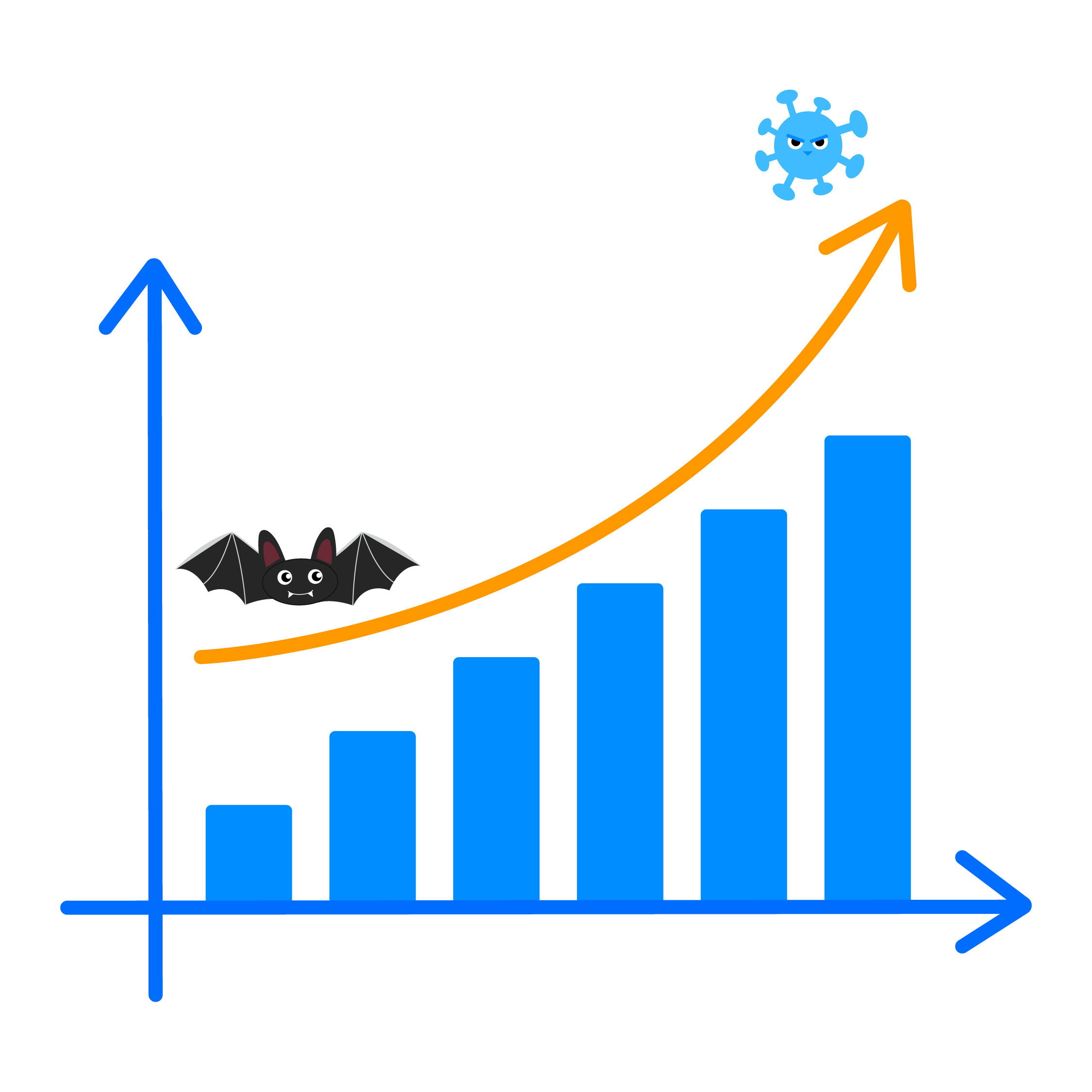By Prof. Marcus Du Sautoy
What is Exponential Growth? From Vampires to Viruses
Here’s a puzzle for you during lockdown. A vampire has to feed on a human every month. But the trouble is that once bitten the human becomes a vampire. How many months does it take for the entire population of the planet, estimated to be 7.8 billion, to become vampires? Is it 34 months? 34 years? 340 years?
The puzzle illustrates the effect of exponential growth. Every month the number of vampires doubles. The trouble is that our human intuition is not very good at dealing with big numbers. Evolution has programmed us to be good at understanding the several hundred people in our local environment. We find it hard to extrapolate beyond our limited horizons. So most people are shocked to discover that after only 34 months, the entire planet had become vampires.
The game of chess also illustrates the dangers of not understanding the fast pace of exponential growth. Legend has it that the game was invented by a mathematician in India who elicited a huge reward for its creation. The King of India was so impressed with the game that he asked the mathematician to name a prize as reward. Not wishing to appear greedy, the mathematician asked for one grain of rice to be placed on the first square of the chess board, two grains on the second, four on the third and so on. The number of grains of rice should be doubled each time.

The King thought that he'd got away lightly, but little did he realise the power of doubling to make things big very quickly. By the sixteenth square there was already a kilo of rice on the chess board. By the twentieth square his servant needed to bring in a wheelbarrow of rice. He never reached the 64th and last square on the board. By that point the rice on the board would have totalled a staggering 18,446,744,073,709,551,615 grains. The dangers of not understanding how doubling can turn one grain of rice or one vampire into so many has been graphically illustrated in our current crisis. Vampires have been replaced with viruses. The doubling in the number of cases of Covid19 at the beginning of this crisis was happening every few days not each month.
Despite all the complexities and uncertainties that exist around the pandemic there is one number above all others that is important in helping us model the future. R0. The basic reproduction number. This is the number of people on average who will contract the disease from one person infected by the virus. It applies to a population of people who were previously free of infection and haven’t been vaccinated, a perfect description of the population of the planet as this virus began to spread in January.

If this number is above 1 then we witness an exponential growth of the spread of the virus during the early stages. If it is below 1 the virus gradually dies out. The good news is that our collective actions can influence the value of R0. As scientists advising government are constantly stressing, it all depends on keeping R0 below 1. At some point we can hope to do that using a vaccine. But until that point, it is our social actions that will act as the disruptive factor that ensure we see the numbers heading towards zero and not exploding with exponential growth.
Although we don’t yet have a way to protect ourselves against the virus mathematics does offer an intriguing way to guard against vampires. Less well-known than garlic or crosses, one way to ward off the Prince of Darkness is to scatter poppy seeds around his coffin. Vampires it turns out suffer from a condition called arithmomania: a compulsive desire to count things. Theoretically, before Dracula finishes trying to count how many are scattered around his resting place, the sun will have driven him back to his resting place.

Arithmomania is a serious medical condition. The inventor Nikola Tesla, whose studies into electricity gave us the AC current, was obsessed by numbers divisible by three: he insisted on 18 clean towels a day and counted his steps to make sure they were divisible by three. Perhaps the most famous fictional depiction of arithmomania is the Muppets' Count von Count, a vampire who has helped generations of viewers in their first steps along the mathematical path.
Vampires are said to have their own numbers: these are defined as a number that can be written as the product of two smaller numbers of half the length which contain all the digits of the larger number. For example 1395=15x93. The two smaller numbers are called the vampire number's fangs. Although this is little more than a numerical curiosity, mathematicians have proved that there are an infinite number of vampire numbers. Can you find some more vampire numbers?